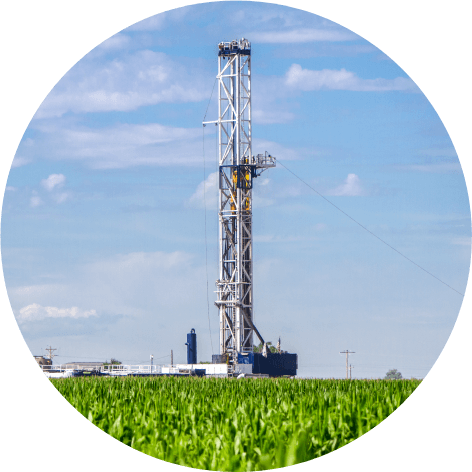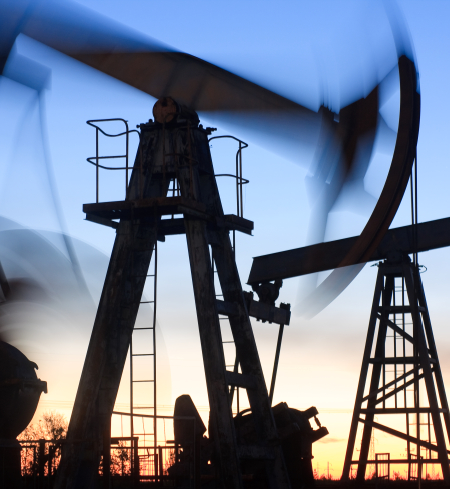We are serious about caring for the environment—starting with the places where we work and live.
Our overall approach includes four key activities:
- Implement best available control technology (BACT)
- Improve our hydrocarbon gathering and processing infrastructure, increase our recycling and disposal of produced water, and limit our use of fresh water
- Safely produce oil and gas while minimizing impacts from air emissions, flared gas, and spills
- Maximize fluid transportation via pipelines rather than diesel-powered trucks
Diamondback’s significant growth and increased production in 2018 influenced our correspondingly higher volumes of emissions, water use, total spills, and other environmental impacts. We are working to implement better mitigation solutions and develop stronger preventative maintenance plans aimed at reducing our environmental footprint going forward.
ENERGY, GREENHOUSE GASES AND EMISSIONS
Consistent with our overall approach to environmental responsibility, Diamondback strives to limit and capture air emissions by implementing BACT on all new facilities and wells and retrofitting our older, larger facilities. Diamondback’s leak detection and repair (LDAR) program utilizes various technologies, including optical gas imaging cameras, to monitor facilities. We act promptly to correct any identified flaws and leaks.
This past year, we hired a third-party consultant to analyze and perform direct measurements of vent gasses on our petroleum storage tank emission-control systems. The findings helped us quantify our instantaneous flow rates and change our battery designs to more effectively recover gas emissions.
Other specific activities in 2018 included:
- Replacing gas-driven pneumatic control systems with a compressed instrument air system on facility upgrades or new builds
- Installing low-bleed valves company-wide
- Installing one horizontal heater instead of three vertical heaters on each newly built tank battery to further reduce emissions
- Continuing to install combustion equipment at each site to ensure the highest quantity of natural gas burned per 100 cubic feet vented (i.e., not captured)
- Engineering and designing equipment to reduce the amount of gas hitting tanks
More detail and methodologies for the data and calculations presented in this section can be found in the Appendix.
FLARED GAS
One of our highest priorities is to minimize the flaring of gas at all well sites. As our net production of oil, natural gas, and natural gas liquids nearly doubled in 2018 compared with the prior year, our sites also experienced an accompanying increase in total volume of flared gas. Also, one of our third-party natural gas plants experienced an unexpected shutdown that required increased flaring of Diamondback’s natural gas production at the end of 2018, which contributed to an increase in emissions.
We continue to adopt improved technologies and onsite practices that move us closer to our ultimate goal: Capture 100% of air emissions coming off tanks, and drastically reduce combustion and flared gas released into the atmosphere. To accomplish this, every facility built since 2014 features vapor recovery towers and vapor recovery units. These systems reduced flared gas by 30% on an absolute basis between 2014 and 2017 and contributed to a decrease per unit of overall production during that same time period. We will continue to work to lower fluid volumes on a gross and per-unit basis.
Free Water Knockout Technology
In response to ever-changing industry technology and field conditions, we continue to enhance our tank battery designs to include more efficient control technologies. For example, we install free water knockouts (FWKOs) in place of gun barrels on all new tank battery locations. The FWKOs help prevent flash gas in the tanks from production surges and can handle higher volumes of produced water. This equipment also allows more time for the entrained gas to separate from the water, thereby capturing potential emissions and sending them to pipelines instead.
Water Usage
Diamondback considers water to be an essential resource and strives to use it responsibly. To help minimize the company’s draw on local water resources, we use a blend of recycled produced water, brackish water and freshwater for our completion operations across the basin.
Our use of recycled water for completions increased to 10.7% of total water used in completions in 2018, compared with less than 1% in 2017.
We source brackish (non-potable) water for our drilling and hydraulic fracturing operations where it is available and economically feasible. This helps conserve the available supply of fresh water, since brackish water is too high in salinity for irrigation or household use. In 2018, brackish water comprised approximately 16.6% of our water use for completions in the Delaware Basin and 6.1% of our overall water used for completions. With increasing midstream infrastructure, we can utilize more recycled and brackish water.
Modifying our completion design has also helped us maximize productivity while minimizing freshwater use, helping us to decrease our water intensity rate between 2017 and 2018.
SPILLS AND SPILL MANAGEMENT
Our goal as a company is to work toward zero spills of crude oil, natural gas, and produced water. We follow a disciplined process of prevention, management, and containment. We also work to mitigate spills by assessing and optimizing our facility designs and construction practices.
Diamondback creates and maintains Spill Prevention Control and Countermeasure (SPCC) plans in accordance with federal regulation for our production facilities that have the potential to impact waters of the United States. In addition, we evaluate all new facilities and implement SPCC plans at locations where the tenets of plan implementation would better protect surrounding areas not specifically mentioned in the regulation. Each battery we construct includes a lined secondary containment area to contain and subsequently recover potential releases of liquids.
While we are still working to reduce our spill rate, in 2018 we recovered more than 80% of the volume of spills that occurred.
Spill-Prevention Technologies
We install high-liquid-level alarms on all storage tanks as well as high-level “well-kill” systems. The high-level alarm allows operations personnel to respond to upset situations at the facility. As an additional protection measure, the “well-kill” alarm will automatically shut in the wells associated with the facility to avoid tank overflows. Through additional automation at Diamondback facilities, lease operations personnel can also view tank levels and production data through their phones and computers, allowing them to monitor facilities while attending to other daily responsibilities.
Spill Recovery
Diamondback constructs secondary containment around its tank battery facilities with an impervious barrier. In the event of a liquid release, we strive to capture any released liquids and return them to the tank with no impact on the ecosystem around the facility. If a release does breach our containment, we mobilize remediation personnel as soon as the spill is discovered to begin cleaning up any affected areas.
Waste
Reducing waste at our operations not only helps the environment, but also makes sound business sense. Since production and completions typically generate negligible waste, we primarily focus on minimizing waste at our drilling sites. A portion of the wells we drill in the Permian Basin require the use of an oil-based mud called diesel invert. After use, we dry the cuttings from drilling operations to a level of less than 5% total petroleum hydrocarbons (TPH) before deep-burying it on site and re-using the oil-based mud. Our goal is to achieve a 1% TPH level in our used diesel invert over time.
COMPLIANCE
Our oil and natural gas exploration, development, and production operations are subject to stringent environmental laws and regulations, including those related to waste handling, remediation of hazardous substances, water discharge, and air emissions. In 2018, we did not receive any notice of non-compliance or fines related to our environmental performance.

